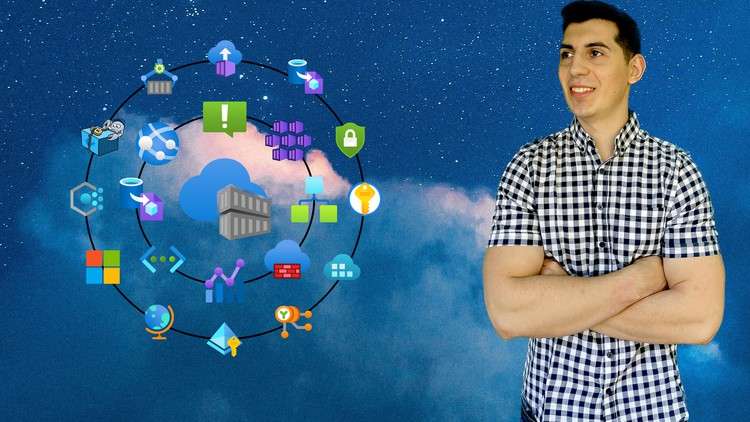
A Comprehensive and Practical Course: Containers, Automation, Networking, Security, Monitoring, HA, AKS, and others
What you will learn
Containerization, Docker and registries basics
What Azure Container Registry (ACR) is, how to create one
Basic operations like import, push, pull
How to automate container builds, pushes and more during commit source code with the help of ACR Tasks and ACR Webhooks
How to properly delete, recover and lock images and repositories
Authentication methods and the proper roles needed
How to integrate ACR with other Azure services
Networking and security considerations like restricting access, private connection, data exfiltration, access from behind a firewall, scanning, Content Trust
How to monitor and troubleshoot ACR
How to obtain resiliency, high availability, performance, better pull speeds, overcome public registries rate limiting and more
Description
In the world of cloud computing, containers have emerged as a game-changer, enabling software developers to create, test, and deploy applications seamlessly. But with this comes the need for a centralized location to store and manage these container images, which is where Azure Container Registry (ACR) comes into play.
Azure Container Registry (ACR) is a private, managed, and secure registry service that allows users to store and manage container images for use with Azure services like Azure Kubernetes Service (AKS) and more, or even non-Azure services or on-premises.
This course, “Azure Container Registry (ACR) Made Easy,” is your comprehensive guide to understanding and managing ACR. Throughout the course, we have a lot of practice/hands-on sessions to ensure that you can apply the concepts you learned in real-world situations. Whether you are new to container management or an experienced professional, this course will provide you with the expertise needed to manage and store containers using ACR.
We will start by exploring containers, images, and registries, followed by an in-depth explanation of ACR’s basics, including its tiers, limits, and pricing. You will then learn how to create an ACR, import, pull, and push images, work with agent pools, and more.
The course then moves on to more advanced topics, such as automating with all kinds of ACR Tasks and Webhooks, deleting, recovering, and locking ACR images and repositories. We will also delve into access control and all the authentication options available.
Next, we will look at integrating ACR with other Azure services, such as Azure Kubernetes Service (AKS), Azure Container Instances (ACI), and Azure Web App for Containers. You will also learn about networking and security, including how to restrict public access, use trusted services, connect via a private endpoint or from behind a firewall, scan images with Microsoft Defender, implement governance and security with Azure Policy, or use Content Trust.
In the monitoring and troubleshooting section, you will learn the basics of troubleshooting, how to monitor ACR, and how to create alerts for metrics and logs. Finally, we will cover high availability and performance, including moving an ACR to another region, availability zones, geo-replication, Project Teleport, and cache for ACR.
By the end of this course, you will have gained a thorough understanding of ACR and the skills to create and manage your own container registry with ease. Whether you are a software developer, a DevOps engineer, or an IT professional, this course will equip you with the knowledge and skills to take your container management to the next level.
Content